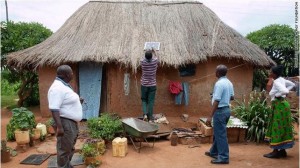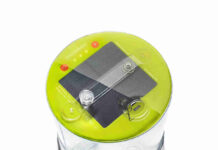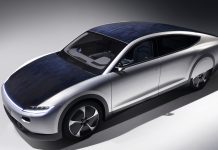 One quarter of the world’s population live without electricity, according to a United Nations report that is almost 1.5 billion people. When we talk about rural communities of Africa, more than 95 percent of homes have no access to electricity so it’s the time for solar energy to transform their lives.
One quarter of the world’s population live without electricity, according to a United Nations report that is almost 1.5 billion people. When we talk about rural communities of Africa, more than 95 percent of homes have no access to electricity so it’s the time for solar energy to transform their lives.
Those who can afford any power at all have to spend large proportions of their income on kerosene for lamps or travel to larger towns to charge their batteries several times a week.
Burning kerosene contributes to indoor air pollution, which is estimated to kill 1.6 million people each year. Kerosene lamps also lead to fires that cause severe burns and deaths.
Solar energy saves families money as well as allowing children to study in the evenings and giving families access to information through radio and television and mobile phone chargers.
The light from a solar bulb is also between 10 and 20 times brighter than from a kerosene lamp.
Among those bringing solar energy to the world’s poor is Rural Energy Foundation, a Dutch non-profit organization. It has now helped 450,000 people in sub-Saharan Africa gain access to low-cost solar energy systems. Rural Energy Foundation runs the SolarNow program, training independent retailers and technicians in nine countries to sell low-cost solar gadgets or home systems to people without electricity.
Last month, the organization was one of the international winners of the Ashden Awards for Sustainable Energy.
Willem Nolens, director of Rural Energy Foundation, said: “Lack of access to energy — just as lack of clean drinking water — is a cause of poverty, not just a result of poverty.
“Gaining access to electricity can be really life-changing. People can increase their productivity, children can study, read books and watch television, which allows them to be connected to the world.
“Whole villages can become self-sufficient once someone has a home solar energy system.”
Rural Energy Foundation supports 250 independent local retailers in Burkina Faso, Ethiopia, Ghana, Mali, Tanzania, Uganda, Senegal, Mozambique and Zambia.
It does not provide the equipment, but identifies retailers and distributors and trains them in solar energy technology, marketing, sales and business administration, to help them to grow their own businesses.
Rural Energy Foundation also helps customers to access loans to pay for solar energy systems, which can usually be repaid within a year or two from the savings made on kerosene or charging batteries.
A full home solar energy system typically costs between $250 and $630, and a solar lamp between $25 and $40.
Local entrepreneurs can choose their own manufacturers and importers, but Rural Energy Foundation checks their quality and withdraws its support from retailers selling sub-standard products.
Ronald Schuurhuizen, Rural Energy Foundation’s country co-coordinator in Uganda, said: “It’s a hard life for people in rural areas of Uganda. Most people are subsistence farmers, collect scarce firewood for cooking, go to sleep when it gets dark and hardly ever travel out of their own areas.
“If you need to charge batteries, that often involves cycling 10 or 20 kilometers over hilly terrain to a charging station in a main town.
“The most important difference solar energy makes for most people is the ability to charge mobile phones. Most of Africa has mobile coverage but most people have no way of charging phones.
“For those who can, it can change their lives. They can keep in touch with friends and family, and those in cities can use their mobile phones to send money to relatives in rural areas.
“Access to television is also life-changing for many people. Whole villages will crowd around a television set to watch the news. It opens up the world for them.”
Rural Energy Foundation is not alone in bringing solar energy to the world’s poor. D.light, the gold winner of this year’s Ashden Awards and one of the brands sold by Rural Energy Foundation’s retailers, has sold more than 220,000 solar lanterns in 32 countries, particularly in India and East Africa, benefiting around 1.1 million people. D.light produces three different models of solar lanterns costing between $10 and $45.
Meanwhile, the American inventor Stephen Katsaros and his company Nokero claim to have developed the world’s first solar light bulb.
The Nokero went on the market in June this year and it has already been tried in 33 countries.
“We’ve done everything we can to make this solar bulb affordable and long-lasting so the people who need it can afford it, and reap the benefits,” said Katsaros.
“There are so many ways this product can change lives: It can help keep families and shopkeepers safe, help students study at night, eradicate indoor pollution, and reduce worldwide carbon emissions.”




I’m a homeowner and our average monthly bill is around $125 give or take $25. I’d love to install a wind turbine if it would work efficiently and cut our costs. I have no clue and would like to avoid days of research and defer to a professional if it is viable cost wise to try this project. I know there may be green grants or special financing available but again have no clue about total costs, pay back venues such as years to return investment and options for even more then one turbine. We are in a bit of a forced wind tunnel because of wall and home placement so we have abundant resources. Any heads up information would be very helpful.
Thanks, I bookmarked your website and will come back later.
This sort of info ought to be valued by everyone – it’s some thing which i believe we can all draw upon. I really much like the theme you are utilizing right here which I think is wordpress is not it? I happen to be searching close to for some thing simular but have yet to discover some thing suitable for my website. I looked in the link on your footer and will attempt and download a copy of it for myself – thanks.
First of all ,you have created a very beautiful template . I think i might design something similar for a future blog that i want to build . In addition ,i honestly enjoy most of your posts and your unique point of view. Cheers
What a writeup!! Very informative also easy to understand. Looking for more such comments!! Do you have a twitter?
I recommended it on digg. The only thing that it’s missing is a bit of new design. However thank you for this information.
Hello could I use some of the insight found in this blog if I provide a link back to your site?
Blogging is a great way for you to communicate with other people who have the same interests as you.
This is one technology that I would love to be able to use for myself. It’s definitely a cut above the rest and I can’t wait until my provider has it. Your insight was what I needed. Thanks
Photovoltaics and solar power offer the best blend of ease, cost and maintenance compared to wind and just about any other renewable energy such as tidal.
Good infomation here, thanks.